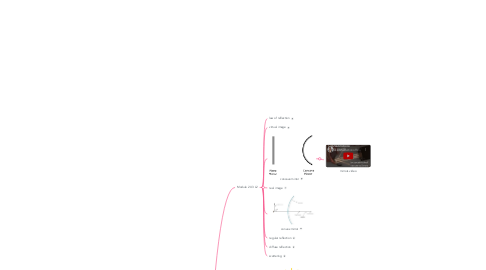
1. Module 1 U3 L1
1.1. Wave
1.2. vibration
1.3. transverse wave
1.4. mechanical wave
1.5. water waves
1.6. mediums
1.7. longitudinal waves
1.8. wavelength
1.9. sound waves
1.10. amplitude
1.11. intensity
1.12. decible
1.13. frequency
1.14. pitch
2. Module 1 U3 L2
2.1. Reflection
2.2. absorbtion
2.3. transmition
2.4. diffraction
3. module 1
3.1. unit 1
3.1.1. lesson 1
3.1.1.1. Uniformitarianism
3.1.1.2. Absolute Age
3.1.1.3. Relative Age Dating
3.1.1.4. Sediment
3.1.1.5. Strata
3.1.1.6. Relative Age
3.1.1.7. Superposition
3.1.1.8. Original Horizontality
3.1.1.9. Lateral Continuity
3.1.1.10. Inclusions
3.1.1.11. Cross Cutting Relationships
3.1.1.12. The fossil record
3.1.1.13. Mass Extinctions
3.1.2. lesson 2
3.1.2.1. Disconformities
3.1.2.2. Angled unconformity
3.1.2.3. Nonconformity
3.1.2.4. correlation
3.1.2.5. index fossils
3.1.2.6. Key bed
3.1.2.7. geologic time scale
3.2. Unit 2
3.2.1. Lesson 1
3.2.1.1. Reference Point
3.2.1.2. Position
3.2.1.3. Displacement
3.2.1.4. Speed
3.2.1.5. Average Speed
3.2.1.6. Velocity
3.2.1.7. Vector
3.2.1.8. Distance Time Graphs
3.2.2. lesson 2
3.2.2.1. Acceleration
3.2.2.2. Forces
3.2.2.3. Contact Forces
3.2.2.4. Newtons 2nd Law of motion
3.2.2.5. Friction
3.2.2.6. Free Body Diagram
3.2.2.7. Net Force
3.2.2.8. Newtons 1st Law of motion
3.2.3. lesson 3
3.2.3.1. Newtons 3rd law of motion
3.2.3.2. Force Pairs
3.2.3.3. Normal Forces
3.2.3.4. Collision Forces
3.2.3.5. Elastic Collision
3.2.3.6. Inelastic Collision
3.2.4. lesson 4
3.2.4.1. Noncontact Force
3.2.4.2. Gravitational Force
3.2.4.3. Gravitational Field
3.2.4.4. Gravitational Force and Mass
3.2.4.5. Gravitational Force and Distance
3.2.4.6. Gravity in our solar system
3.2.4.7. Gravitational Acceleration
3.2.4.8. Weight
3.2.4.9. General Relativity
4. Module 3
4.1. evolution
4.1.1. Natural selection
4.1.2. Galapagos islands
4.1.3. HMS beagle
4.1.4. fitness
4.1.5. genetic variation
4.1.6. Darwin finches
4.1.7. Survival of the fittest
4.1.8. charles darwin
4.1.9. jean-Baptiste Lamarck
4.1.10. Common ancestory
4.1.11. adaptations
4.1.12. functional adaptation
4.1.13. structural adaption
4.1.14. behavioral adaption
4.1.15. environmental interactions
4.1.16. modern theory of evolution
5. Module 2 U3 L2
5.1. law of reflection
5.2. virtual image
5.3. concave mirror
5.3.1. mirrors video
5.4. real image
5.5. convex mirror
5.6. regular reflection
5.7. diffuse reflection
5.8. scattering
6. Module 2 U3 L1
6.1. Light
6.2. Radiant energy
6.3. light energy
6.4. light brightness
6.5. speed of light
6.6. light sources
6.7. transperent
6.8. translucent
6.9. opaque
6.9.1. opaque vidoe
6.10. reflection
7. Module 3 U2 L4
7.1. Electromagnetism
7.2. electric current
7.3. magnetic fields
7.4. increasing magnetic field strength
7.5. controlling electromagnetics
7.6. Electric Motor
7.7. Generating Electric Current
7.8. Electric Generator
7.9. Mechanical to electric energy
7.10. Direct Current
7.11. Alternating Current
8. module 3 U2 L3
8.1. Simple Circuit
8.2. Closed Circuit
8.3. Open Circuit
8.4. Charged Particles
8.5. Electric Current
8.6. Voltage
8.7. Energy
9. Module 3 L1
9.1. Fossilization
9.2. mineralization
9.3. carbonization
9.4. Molds and casts
9.5. Trace fossils
9.6. Organic Matter
9.7. Reletive age dating
9.8. absolute age dating
9.9. Geologic timescale
9.10. Extinctions
9.11. Transitional fossils
9.12. sudden environmental change
9.13. gradual environmental change
10. module 0
10.1. Unit 1
10.1.1. Section 1
10.1.1.1. Scientific Method
10.1.1.1.1. Observation
10.1.1.1.2. Question
10.1.1.1.3. Hypothesis
10.1.1.1.4. prediction
10.1.1.1.5. Test the prediction
10.1.1.1.6. Observations (step 6)
10.1.1.1.7. Qualitative and Quantitative observations
10.1.1.1.8. iterative process
10.1.1.1.9. Publish and peer review
10.1.2. Section 2
10.1.2.1. Claim
10.1.2.2. Evidence
10.1.2.3. Reasoning
10.1.3. Section 4
10.1.3.1. DRY
10.1.3.2. MIX
10.1.3.3. LENSES
10.1.3.4. Lable and List
10.1.3.5. Equation
10.1.3.6. Notice
10.1.3.7. Speculate
10.1.3.8. Explain/Evaluate
10.1.3.9. Summary
10.1.4. section 5
10.1.4.1. Lab Safety Standards
10.1.4.2. Hair in a lab
10.1.4.3. Clothing in a lab
10.1.4.4. Footwear in a lab
10.1.4.5. Protective Glasses
10.1.4.6. Colors of Health Hazard symbols
10.1.4.7. MSDS
10.1.4.8. Pipetting
11. Module 3 U2 L2
11.1. Charges
11.2. Electric Fields
11.3. Electric Field Strength
11.4. Electric Potential Energy
11.5. Electrically charged objects
11.6. Electrically Neutral
11.7. Induction
11.8. Electric Insulator
11.9. Electric Conductor
11.10. Conduction
11.11. Conservation of Charge
12. module 3 u2 l1
12.1. magnet
12.1.1. magnet image
12.2. Ferromagnetic Elements
12.3. Magnetic Force
12.4. Magnetic Poles
12.5. Magnetic Fields
12.6. Compasses
12.6.1. compass image
12.7. Magnetic Strength
12.8. Magnetic Potential Energy
12.9. Magnetic Domain
12.10. Nonmagnetic Materials
12.11. Magnetic Materials
12.12. Temporary Magnet
12.13. Permanent Magnets
13. Module 3 L2
13.1. Homologous Structures
13.2. Analogous Structures
13.3. Vestigial Structures
13.4. Embryology
13.5. Molecular Biology
14. Module 2 L2
14.1. GMO
14.2. Selective breeding
14.3. Genetic engineering
14.4. natural selection
15. module 2
15.1. DNA
15.2. necleotide
15.3. Leading Strand
15.4. Lagging strand
15.5. ligase
15.6. cancer
15.7. gene
15.8. mRNA
15.9. tRNA
15.10. Ribosomes
15.11. aminoacids
15.12. codons
15.13. anti-codons
15.14. peptide bonds
15.15. James Watson/Francis Crick
15.16. Rosalind Franklin
15.17. Double Helix
15.18. nitrogenous base
15.19. Adenine
15.20. Cytosine
15.21. thymine
15.22. uracil
15.23. Genome
15.24. Helicase
15.25. Primase
15.26. DNA polymerace
15.27. semi-conservative replication
15.28. replication
15.29. RNA
15.30. transcription
15.31. translation
15.32. mutation
16. module 2 u2 l1-3
16.1. Lesson 1
16.1.1. Kinetic energy
16.1.2. kinetic energy and mass
16.1.3. kinetic energy and speed
16.2. lesson 2
16.2.1. potential energy
16.2.2. elastic potential energy
16.2.3. gravitational potential energy
16.3. lesson 3
16.3.1. mechanical energy
16.3.2. conservation of energy
16.3.3. work
16.3.4. thermal energy transformation
